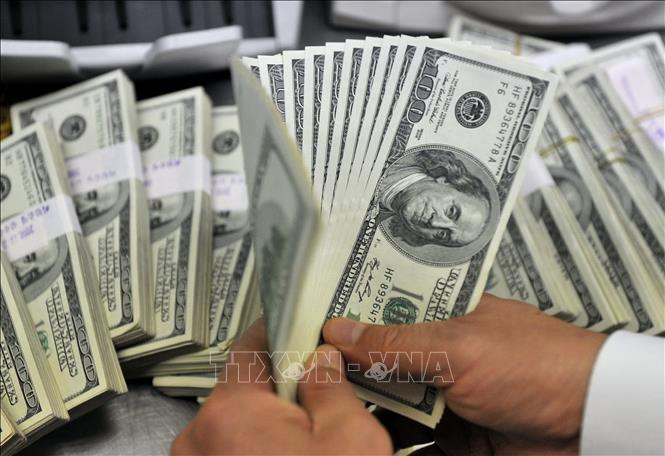The US Treasury Department said on January 2 that the total government debt exceeded $34 trillion for the first time, signaling both political and economic challenges in improving public finances in the coming years.

In June 2023, Republican lawmakers and the White House agreed to temporarily raise the US debt ceiling, thereby avoiding the risk of default. The agreement will be in effect until January 2025.
How did the US public debt climb to $34 trillion?
The US public debt has surpassed $34 trillion, years earlier than forecasts made before the COVID-19 pandemic. In January 2020, the US Congressional Budget Office forecast that the country's public debt would exceed $34 trillion in fiscal year 2029.
But the debt has grown faster than expected as the COVID-19 pandemic has paralyzed much of the US economy since 2020. The US government under former President Donald Trump and current President Joe Biden has had to increase borrowing to stabilize the economy and support the recovery.
But the economic recovery was accompanied by a surge in inflation, which pushed up interest rates and increased the cost of servicing the government's debt.
Impact on the economy
The current debt situation will not have much impact on the economy at the moment, because investors are still willing to lend money to the federal government. This borrowing will help the US government continue to fund many programs without having to raise taxes.
But the path of public debt over the next few decades could threaten national security and many major government programs.
Any turbulence in government operations, such as another debt ceiling hike, could pose a financial risk if investors become concerned about lawmakers' intentions to repay the debt.
Foreign holders of U.S. bonds, such as China, Japan, South Korea and European countries, have reduced their holdings of U.S. government bonds. An analysis by the Peterson Foundation found that foreign holdings of U.S. bonds peaked at 49% in 2011, but had fallen to 30% by the end of 2022.
The US public debt will continue to rise sharply in the coming months, as the US Treasury Department estimates it will borrow nearly $1 trillion by the end of March, which is an alarming sign, said Michael Peterson, executive director of the Peterson Foundation.
Impact on the American people
The debt is equivalent to about $100,000 per person in the US. It sounds like a lot, but so far it has not threatened the US economic growth.
Instead, the risk of public debt may occur in the long term if the above debt level continues to increase uncontrollably.
And as the debt challenge grows over time, the government will face harder choices, as the costs of Social Security, Medicare and Medicaid increasingly outstrip tax revenues.
The two parties' stance
Both Democrats and Republicans have called for debt reduction, but they disagree on the right way to do it.
The Biden administration is proposing tax increases for the wealthy and corporations to reduce the budget deficit. Biden is also increasing funding for the Internal Revenue Service (IRS) so that the agency can collect unpaid taxes and reduce the debt by billions of dollars over 10 years.
Republicans, meanwhile, have called for deep cuts to non-military programs, the elimination of clean energy tax credits, and spending that was passed in the Deflation Act. But Republicans also want to defund the IRS and cut taxes further, both of which would likely increase the debt.
TB (summary)